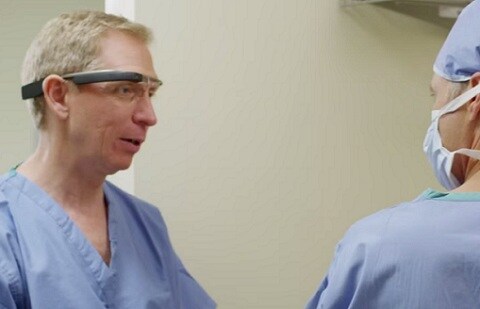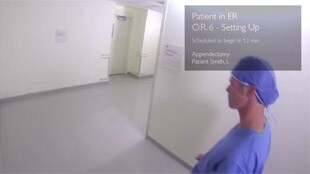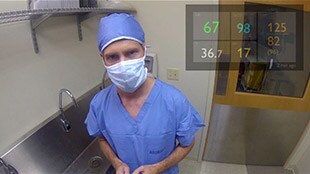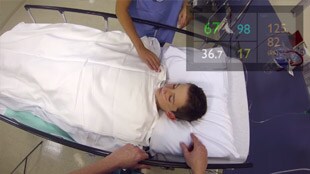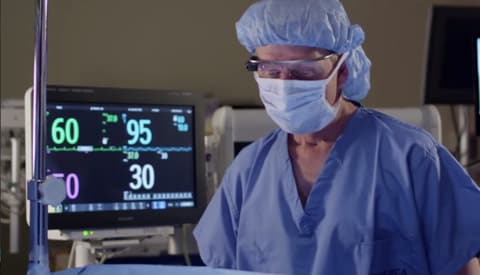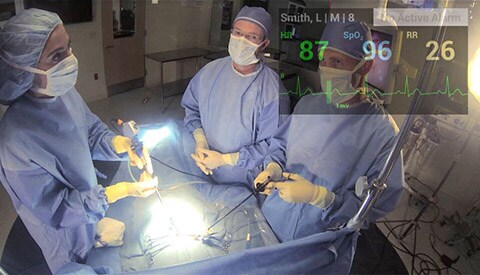How would your practice change if you could wear your computer?
That’s the question that developers and designers from Accenture Technology Labs and Philips asked in a collaborative project to explore the potential of Google Glass in a healthcare setting. Researchers simulated the experience of connecting Google Glass, a wearable computer, to the IntelliVue monitoring system. With the ability to see patient vital signs in front of your eyes, the results showed many possibilities. Google Glass looks like a pair of glasses. It allows the wearer to view screens in their peripheral vision through LED displays. Wearers can search the web, access custom apps, or interface with other computers by either swiping the glasses or by using voice commands. It can even record video from the wearer’s perspective. Using Google Glass with IntelliVue technology, the user could confirm patient pre-op status, record a procedure, or check post-op vital signs—all without having to walk to the monitor. In the OR simulator, the anesthesiologist could view patient information without having to turn away from the procedure. And the results suggest even more possibilities for using wearable computers in healthcare, including: How can you imagine using wearable computers in your practice? Join the discussion at LinkedIn.

Dr. David Feinstein with Philips and Accenture developers testing Google Glass in the Digital Accelerator Lab.
David Feinstein, MD, Staff anesthesiologist, Beth Isreal Deaconess Medical Center, Boston, MA, USA
"At first it's going to be cool and I think as everything develops, it's going to be very practical. It's a great stepping stone that will help make the care of patients go a little bit smoother and our jobs a little bit easier."
